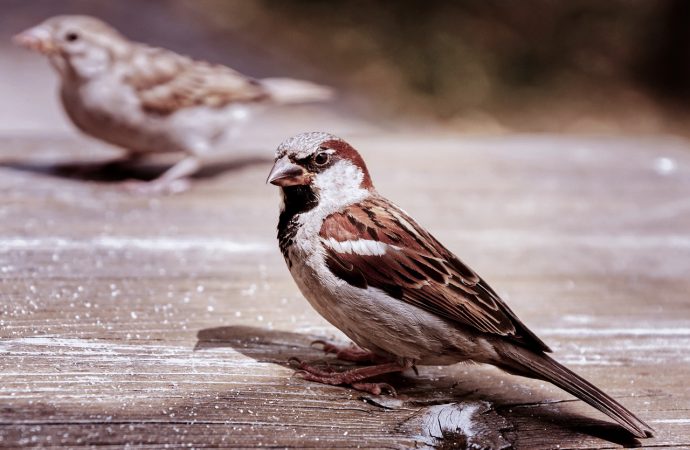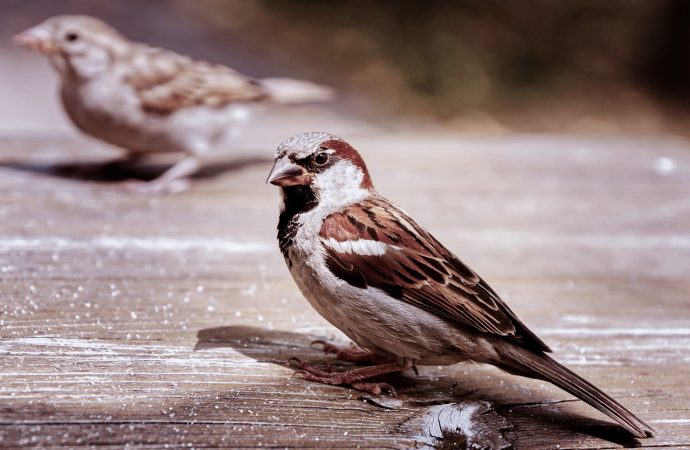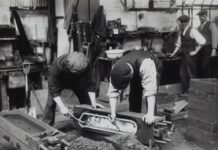Walking through the centre of some European cities such as London, Amsterdam, Madrid or Prague, you may sense something is missing. If you have a quicker eye, you may have already realized that a specific bird is practically absent from the European skies1. The House Sparrow, a little brown bird, our winged neighbor par excellence in towns and cities, our companion of over 10,000 years, is disappearing from the old continent and no one knows exactly why.
Proof of this is that the British newspaper “The Independent” came to offer a reward of £5,000 to those who solved the mystery of the disappearance of the Londoner sparrows2. Despite the succulent prize, the puzzle remains unsolved almost two decades later.

Researchers have been our most reliable detectives. But, so far, the scientific community hasn’t accepted any of the proposed theories to explain the disappearance of the House Sparrow as totally valid. Some theories stand out and enjoy a greater acceptance: the disappearance of places to nest because of the new buildings3, the lack of green areas linked to the reduction of invertebrates with which to feed chickens4, the increased air pollution produced by our vehicles5, the unhealthy urban diet that they find in the city6 and increased exposure to the avian malaria7.
However, although it is possible that all these factors act jointly to the detriment of this small species, it would be key to determine which one has a major influence on their disappearance to ensure their conservation.
But, are House Sparrows so important for the city and its inhabitants? Wouldn’t it be more interesting to invest the effort and money in the conservation of tropical or big African animals? Is it urgent to act now to preserve the species if there are still millions of individuals? Let me give you some clues.
A bioindicator of urban health
The House Sparrow is sedentary – it lives all year round in the same place, the city. Therefore, humans and sparrows live in the same habitat, the urban ecosystem: sparrows breed on your tiled-roof, teach their chicks to fly away from the cars on your street, and feed in the garden that you see through the window (if you are lucky to have a green area in your neighborhood) or they even eat the scraps of the breakfast cupcake that you gobble up running to the bus stop every morning. We share habitat, we share the same way of life. For this reason, the House Sparrow is an important bioindicator of urban health, a species whose presence or absence shows how healthy our city is.
Let me tell you that I don’t have good news for you: because of its decline in numbers, this bioindicator is now in the Red List for Birds in the United Kingdom (UK)8. Moreover, if the Spanish cities have run out of nine million sparrows in twenty years9, we should know by now that trouble is coming: “When your neighbour’s house is on fire, beware of your own”. Something bad is happening in the cities, the urban bioindicator by excellence is warning us, and we must realize the problem before it’s too late.
The mystery of the disappearance of sparrows may have more implications for citizenship than we thought. Noise? Increased pollution? Unhealthy diet? Are we talking about sparrows or humans? That’s how a bioindicator works. As J.D. Summers-Smith, one of the most illustrious researchers on this species, once said: “We cannot afford to dismiss the possibility that the House Sparrow is the modern equivalent of the miner’s canary”10.
Questions from the lab
At the Cavanilles Institute of Biodiversity and Evolutionary Biology of the University of Valencia, Spain, we are worried about the disappearance of the “urban canary” and, thanks to the funds of the Generalitat Valenciana and European Social Fund, we are trying to reveal the causes of this decline. As the House Sparrows of every region could behave differently, depending on the characteristics of the urban area where they live, first we needed to know the factors that favor or harm these populations in our study area (in our case, Eastern Spain).
Whereas in the UK House Sparrows are more commonly found in private gardens11, we found that this is not so much the case in Eastern Spain, where they populate those “green islands” of the Spanish cities, the parks12. We also found that areas with heavy traffic, and hence more polluted, and those with high buildings were almost empty of our winged friends. Thus, we found some similarities with the aforementioned studies. However, we also discovered that the communal big rubbish bins were an important factor for the species12. This means that healthy food is scarce in the cities and birds are forced to eat whatever they find around.
So, our first hypothesis is that the lack of green in Spanish cities may have a pernicious effect on their House Sparrows abundance because they can’t get enough food of quality and need to look for other sources.
With those results, other questions arose at our lab. Are green areas changing in our study area and affecting the populations? What could be the key to the decline: the urban diet or pollution? House Sparrows are sedentary, but how linked between them are close populations? In the case of a colony extinction, is there hope to be recolonized? What are the main urban features that have changed since the decline began in our area?
These questions are being researched by our team. We have censused lots of colonies; we detected their preferred and avoided urban features, we have sampled blood to obtain nutritional and oxidative stress values; we have color-ringed individuals to follow them through the binoculars; and we have studied their nesting places, among many other things. Hopefully, these results will be published soon.
At the end of the project, we hope to have a solid scientific basis to point to the specific cause or main causes of the decline of the species in Eastern Spain. Those results may be extrapolated to other Spanish regions or even other parts of Europe. In short, we want to provide more keys to solve the mystery of the disappearance of House Sparrows. And not only that, but we will also try to propose political urban planning and wildlife management measures that should be carried out so that we do not run out of our most illustrious winged neighbors, the urban bioindicator, the House Sparrow.
References
[1] M. McCarthy. Nature Studies: Where are all the sparrows in London? The Independent, 2014. https://www.independent.co.uk/voices/comment/nature-studies-where-are-all-the-sparrows-in-london-9605678.html
[2] M. McCarthy. Mystery of the vanishing sparrows still baffles scientists 10 years on. The Independent, 2010. https://www.independent.co.uk/environment/nature/mystery-of-the-vanishing-sparrows-still-baffles-scientists-10-years-on-2056309.html
[3] L. Moudrá, P. Zasadil, V. Mouldrý and M. Šálek. What makes new housing development unsuitable for house sparrows (Passer domesticus)? Landsc. Urban Plan, 169: 124–130, 2018. doi:10.1016/j.landurbplan.2017.08.017.
[4] K.E. Vincent. Investigating the Causes of the Decline of the Urban House Sparrow Passer domesticus Population in Britain, 2005. PhD Thesis, DeMontfort University, Leicester.
[5] A. Herrera-Dueñas, J. Pineda-Pampliega, M.T. Antonio-García and J.I. Aguirre. The influence of urban environments oxidative stress balance: a case study on the House Sparrow in the Iberian Peninsula. Front. Ecol. Evol., 5: 106, 2017. doi:10.3389/fevo.2017.00106.
[6] A. Herrera-Dueñas, J. Pineda, M.T. Antonio, J.I. Aguirre. The relationship between House Sparrow and the city: why urban populations are on decline? Talk session presentation at the 10th Conference of the European Ornithologists’ Union, Badajoz, Spain, 24-28 August, 2015.
[7] D. Dadam, R.A. Robinson, A. Clements, W.J. Peach, M. Bennett, J.M. Rowcliffe, A.A. Cunningham. Avian malaria-mediated population decline of a widespread iconic bird species. Royal Soc Open Sci 6:182197, 2019. https://doi.org/10.1098/rsos.182197
[8] BTO. Birds of Conservation Concern 4: the Red List for Birds, 2015. https://www.wildlifetrusts.org/wildlife-explorer/birds/larks-sparrows-wagtails-and-dunnock/house-sparrow
[9] SEO/Birdlife. 9 millones de gorriones menos en los últimos 20 años, 2018. https://www.seo.org/2018/03/22/9-millones-de-gorriones-menos-en-los-ultimos-20-anos/
[10] Summers-Smith, J. D. Current status of the house sparrow in Britain. British Wildlife 10:381–386, 1999.
[11] Shaw LM, Chamberlain D, Conway G, Toms M (2011) Spatial distribution and habitat preferences of the House Sparrow, Passer domesticus in urbanised landscapes. BTO Research Report No. 599. British Trust for Ornithology, Thetford.
[12] E. Bernat-Ponce, J.A. Gil-Delgado, D. Guijarro. Factors affecting the abundance of House Sparrows Passer domesticus in urban areas of southeast of Spain. Bird Study 65:404-416, 2018. https://doi.org/10.1080/00063657.2018.1518403





